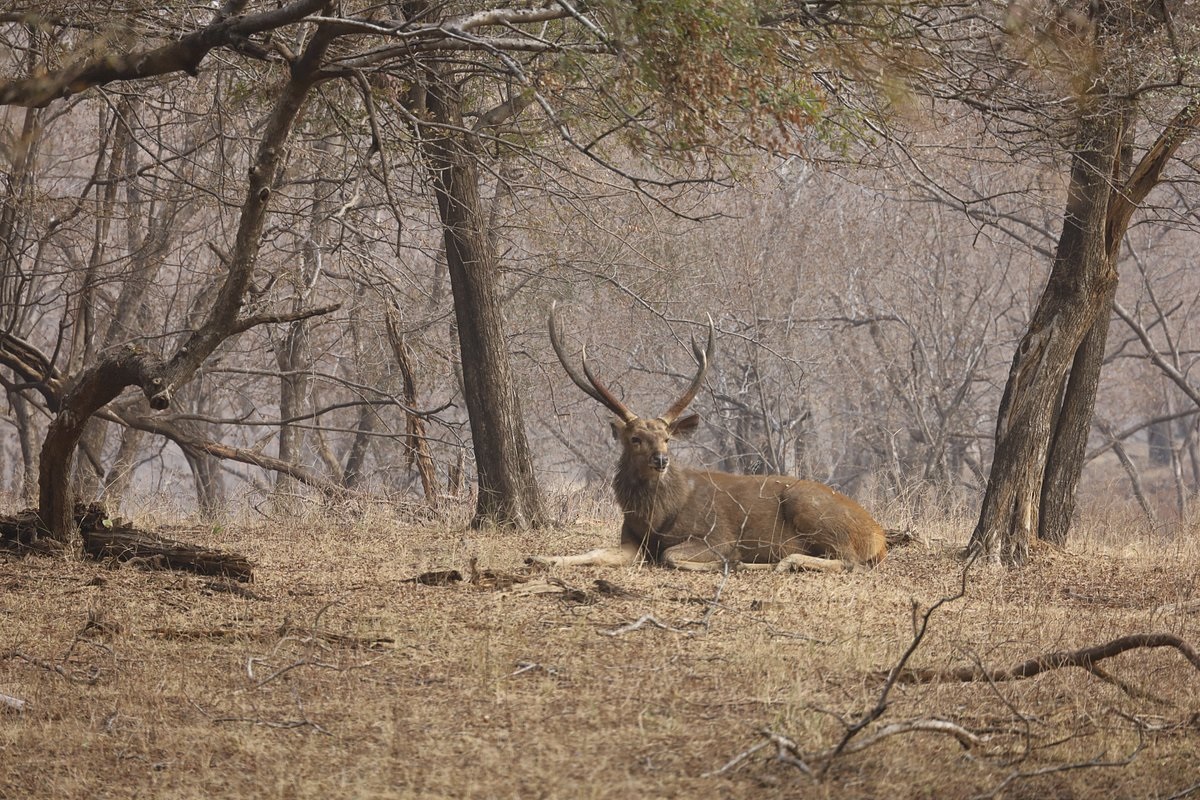After two trips to India that took me on more than 8 days of safari in search of the tiger at Bandhavgarh National Park, I had the idea to write this information on this park. Its goal: to help you organize your discovery of Bandhavgarh National Park as well as your safari tours.
- About Bandhavgarh National Park and the tiger reserve
- What animals to see in Bandhavgarh?
- In which areas to do your Safari in Bandhavgarh?
- Classic permit or full day permit?
- The classic permit
- The full day permit
- How many people in the safari jeeps?
- When is the best time to do your safari in Bandhavgarh?
- What clothes to wear on safari?
- What books to buy for a safari in Bandhavgarh National Park?
- How to get to Bandhavgarh?
- Where to sleep near Bandhavgarh National Park?
- With whom to go on Safari in India?
About Bandhavgarh National Park and Tiger Reserve
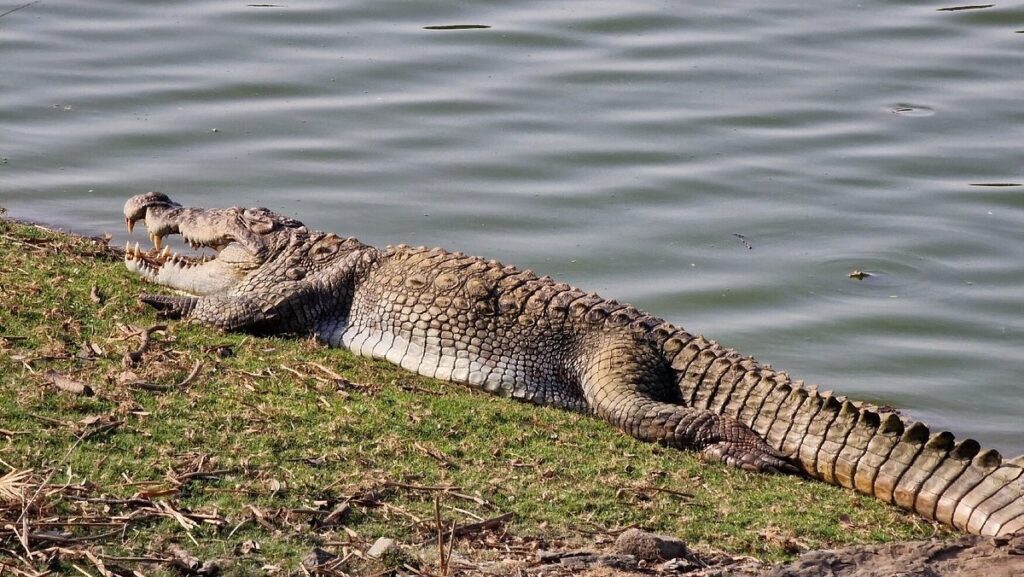
Nestled in the north-east of Madhya Pradesh, Bandhavgarh National Park is a former hunting reserve of the Maharajas of Rewa known as “Shikargaah”.
Declared a national park in 1968, Bandhavgarh has an area of 716 km² concerning the core zone, but the tiger reserve which also includes the buffer zone and the Panpatha Wildlife Sanctuary represents 1536 km² in total.
Bandhavgarh means “the brother’s fort” in Sanskrit and refers to the highest hill in the region. It is said to have been given by God Rama to his younger brother Lakshmana to watch over the island Lanka of the demon king Ravana. It is on this hill that the Bandhavgarh fort was built more than 2,000 years ago.
Bandhavgarh National Park mainly comprises sal forests, mixed deciduous forests and bamboo forests, all interspersed with open grasslands. This ecosystem is conducive to many animals.
What animals to see in Bandhavgarh?

Bandhavgarh National Park has a great biodiversity with more than 510 species of plants, more than 100 species of butterflies, 298 species of birds and 47 species of mammals and at least 20 reptiles.
Among mammals, the Bengal tiger, at the top of the food chain, is the one that all visitors want to see. Its population is estimated at 165 individuals in 2023, approximately double compared to 2018.
There are many other mammals to observe such as the discreet leopards, Asian elephants, jungle cats or sloth bears. You will have a better chance of encountering the axis deer, the sambar, the muntjac deer or the Nilgai antelope. Golden jackals, wild boars, resus macaques, langurs and gaurs (the largest wild bovid) are also frequently observed. 37 barasinghas were reintroduced in 2023 in the Magadhi zone from the Kanha National Park, but they are currently living in an enclosure to encourage births before releasing them back into the wild.
With nearly 300 species of birds, birdwatchers will have a great time in Bandhavgarh. Among the birds that you will surely encounter, I can mention the crested eagle, the serpent eagle, the kingfisher, the Indian roller, the red-bellied bulbul, the jungle pygmy owl, the bellowing owl, the brown-necked cormorant, the Gray’s pond heron, the racket dragon or the mourning kingfisher. But many other birds can be observed (see the list on Avibase).
Reptiles are very discreet. No crocodiles live in Bandhavgarh National Park (you have to go to Panna to see them).
In which areas to do your Safari in Bandhavgarh?
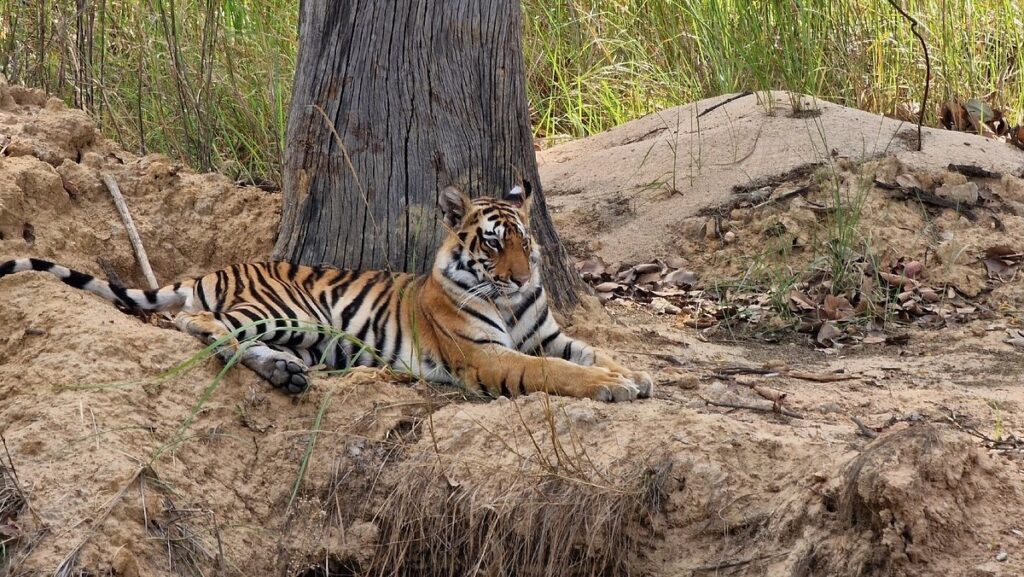
Bandhavgarh National Park is divided into a central zone and a buffer zone.
The central zone includes the sectors of Tala, Magadhi and Khitauli, and the buffer zone the sectors Dhamokhar, Panpatha and Johila.
Today, the Bengal tiger can be seen in all sectors of Bandhavgarh National Park. For other animals, however, the central zone remains the most interesting.
The number of vehicles is limited in each sector of the Bandhavgarh National Park. Depending on the sector and the time (morning or afternoon), the limitation varies from 20 to 28 jeeps.
Note that the central zone is closed on Wednesday afternoons. The buffer zone remains open on Wednesday afternoons.
Classic permit or full day permit?
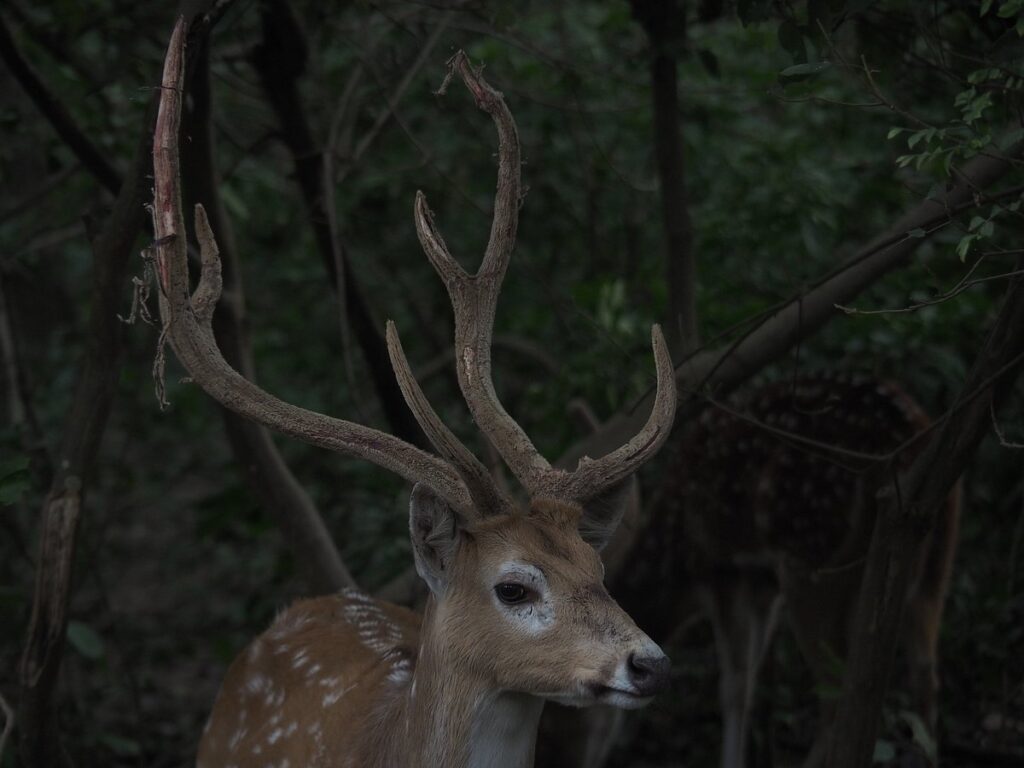
The classic permit
A day of safari in Bandhavgarh with a classic permit is divided into two parts: a safari in the morning from 6 to 11 am, followed by a safari in the afternoon from 3 pm to 6:30 pm. These times change a little depending on the month.
With a classic permit, each safari is limited to a sector of the national park (Tala for example) and you are not allowed to go to another sector during the safari.
The full day permit
The full day permit allows you to do your safari all day long without leaving Bandhavgarh between 11 am and 3 pm. Another advantage is that you can go to any area and sector of the national park and you can start and end your safari 15 minutes before or after the classic safaris.
This maximizes your chances of seeing the Bengal tiger.
But, there is a big but. The price of a full day permit is much more expensive (more than 10 times higher).
How many people in safari jeeps?
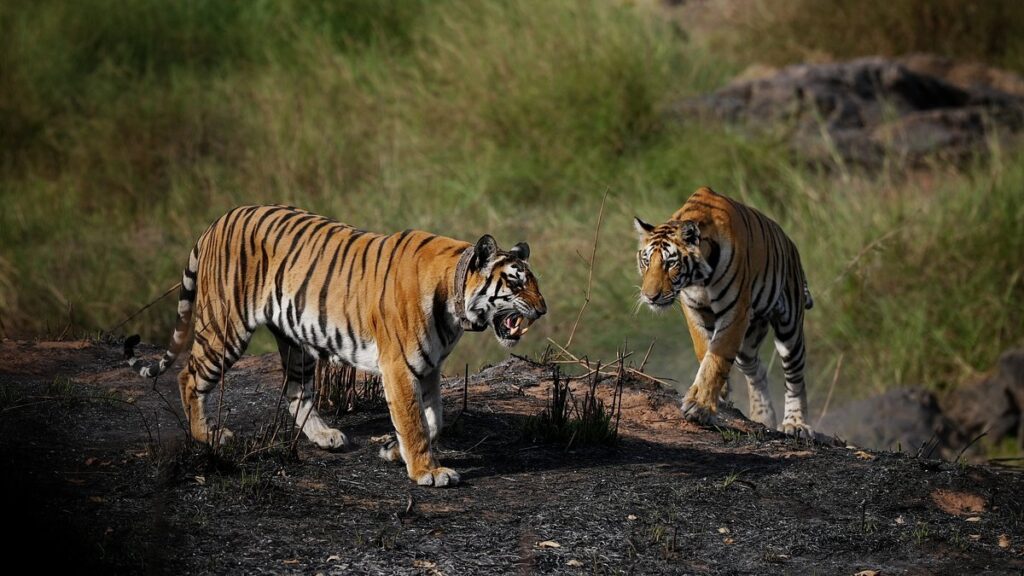
6 passengers are allowed per jeep. In addition, there is the driver and the park guide. Compared to a safari in Africa, the jeeps are small, leaving little room for photo equipment.
I recommend that you limit the number of passengers to 3 or 4 people per 4×4. In the case of a full day permit, the number of passengers is limited to 4.
When is the best time to go on safari in Bandhavgarh?
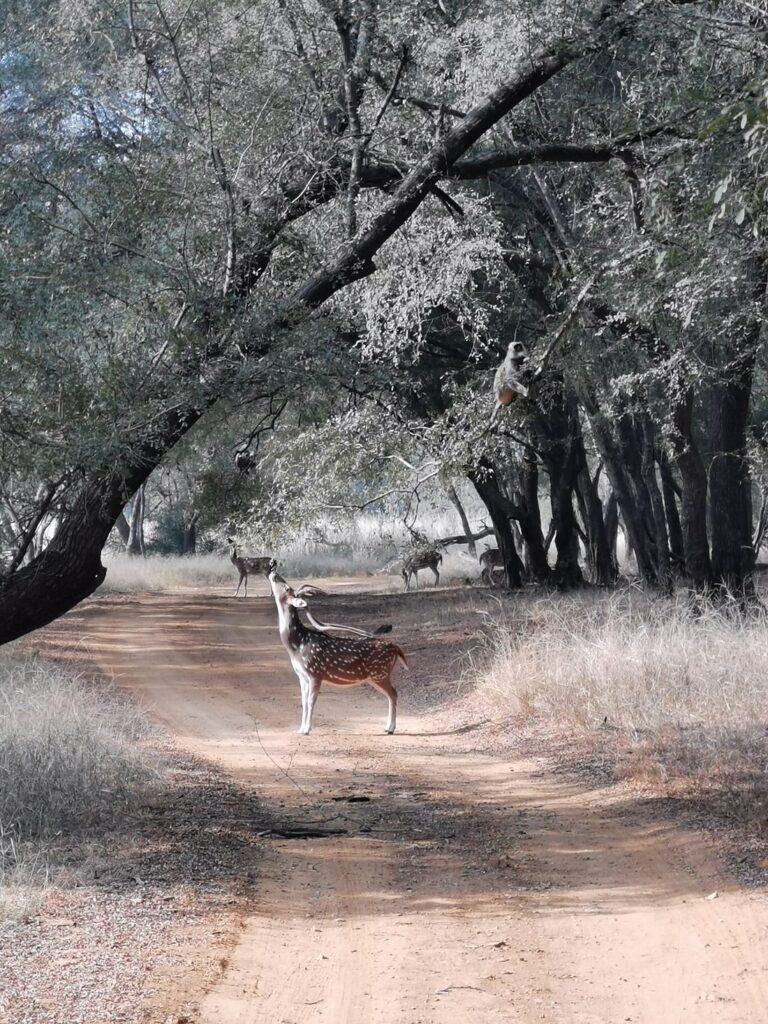
Bandhavgarh National Park is open to visitors from October 1 to June 30.
The best time for birds is from November to April. Concerning the Bengal tiger, the best chances of seeing it are from March to June when the vegetation is scarcer and daytime temperatures easily exceed 40°C. For the nature lover who wants to see it all, the best time is March and April.
What clothes to wear on safari?
I always recommend wearing clothes in the colors of the ecosystem for a safari. But here, I wanted to talk to you about the clothes to bring and they will be different depending on the season. From October to February, morning and late afternoon temperatures can be cool to cold (I already had 5°C in February in the morning). Bring suitable clothing such as a hat, a down jacket, a neck warmer, gloves, etc. Conversely, in April, May and June, temperatures can rise to 40°C during the day. So bring light clothing and a fleece for the morning or the end of the day.
How to get to Bandhavgarh?
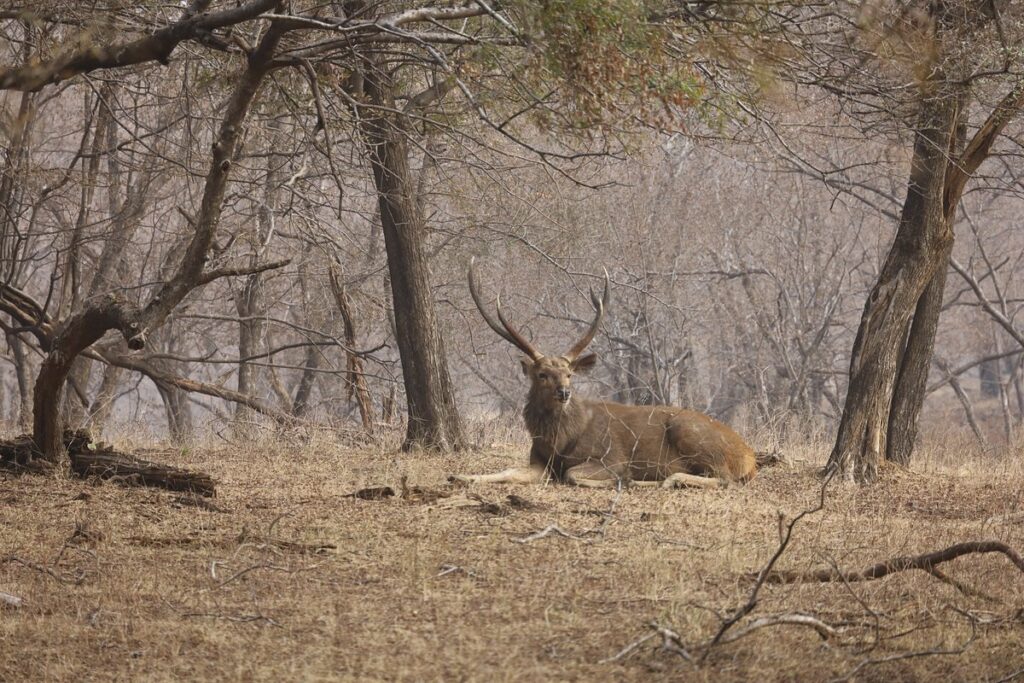
International flight to Delhi then internal flight to Jabalpur. It is then a 4 hour drive to reach Bandhavgarh National Park by taxi.
Another option is to take the train. The nearest railway station is Umaria, about 35 km from Bandhavgarh. Besides Umaria, the other station close to the national park is Katni. Both stations are well connected to the major cities of the country, including Delhi, Agra and Jabalpur.
Where to sleep near Bandhavgarh National Park?
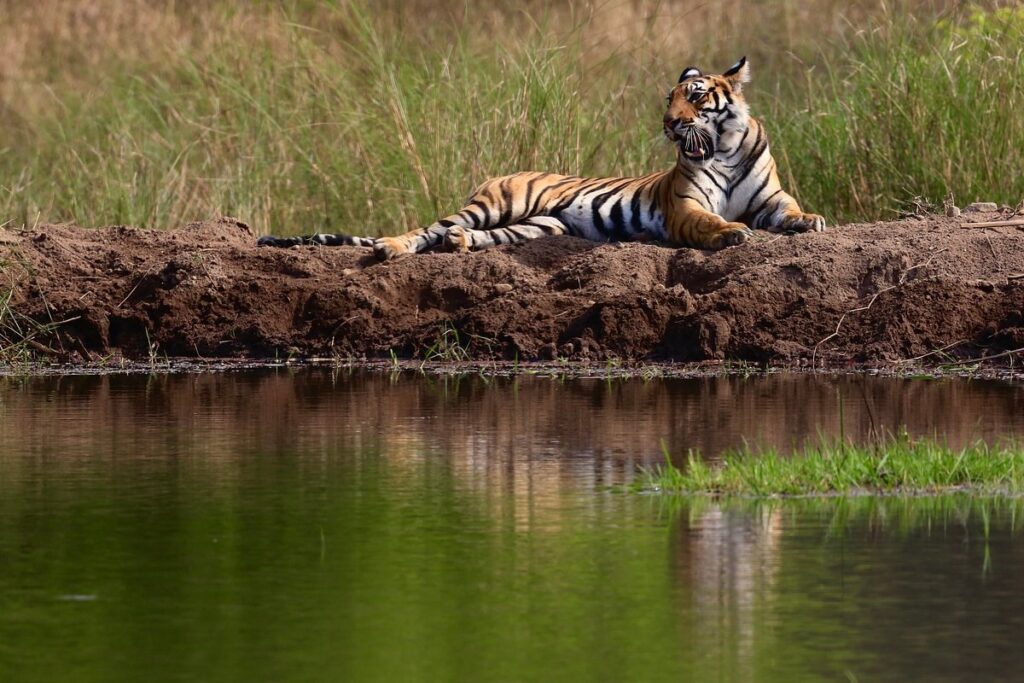
The Kings Lodge, a few minutes from Tala Gate, is a comfortable and pleasant lodge for exploring Bandhavgarh National Park. In the same range of accommodation, I also recommend the Mahua Kothi Bandhavgarh – A Taj Safari Lodge, also located less than 15 minutes from Tala Gate.
In a slightly lower range but still very comfortable, I recommend the Aranyak Resort. It is less than 15 minutes from Tala Gate. Very good value for money. Still in this 3-star range, the Bandhavgarh Jungle Lodge is another interesting option, even closer to Tala Gate.
The Roaring Salvan County is a cheaper option near the Magadhi Gate of Bandhavgarh National Park and away from the city.
With whom a Safari in India?
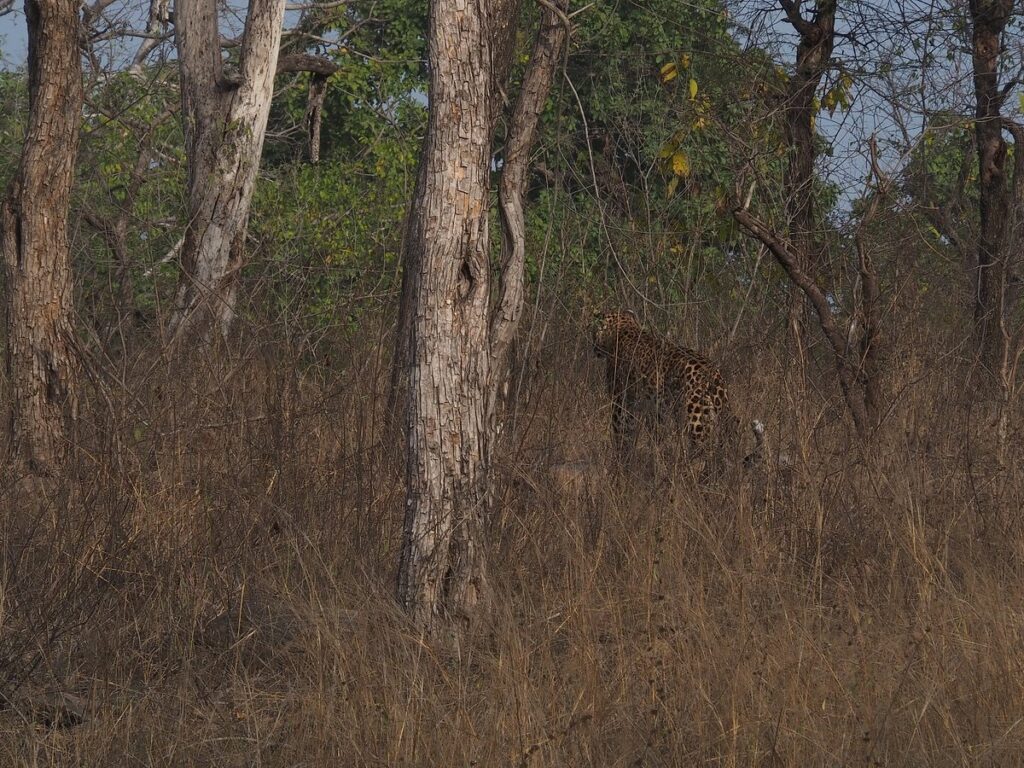
If you want to go on a photo safari in Bandhavgarh with a small group of photographers, I can only recommend the Delighted Journey for whom I accompany groups of photographers.
If you prefer a tailor-made trip, contact the local agency with whom I travel to India when I go as a couple.
For your trip and safaris in India (including trekking or tourism activities), I advise you to send your request for a tailor-made trip to us. I have selected it for its reliability and its ability to respond to personalized requests.
Tiger Safari in Bandhavgarh National Park by Delighted Journey

